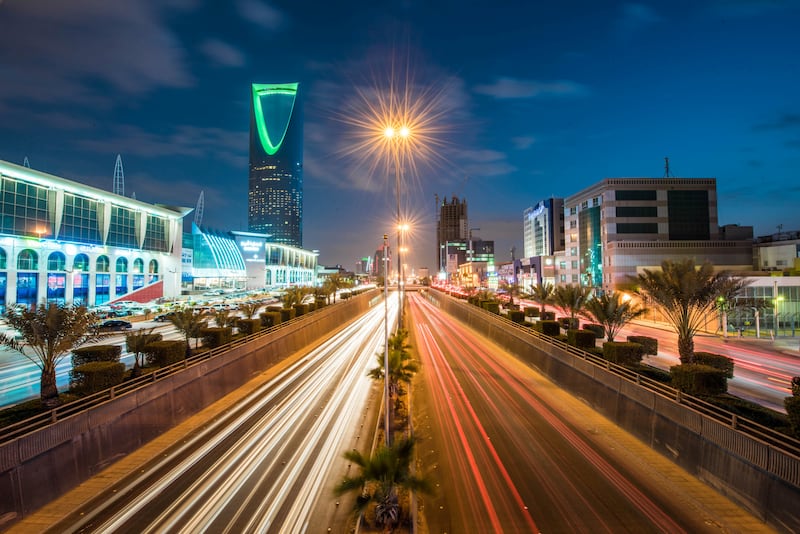Saudi Arabia’s foreign exchange currency reserves are expected to climb to $581 billion by the end of this year, from $451.7bn in April, as the world's largest crude exporter benefits from the surge in oil prices, according to Jadwa Investment.
Foreign reserves at the Saudi Central Bank rose by $300 million a month in April, Asad Khan, chief economist and head of research at Jadwa, said in a research note on Thursday.
“The rise came mostly from bank deposits — up $3.1bn [in April] — while foreign securities declined by $2.3bn during the month,” Mr Khan said.
The kingdom pumped 10.4 million barrels of crude oil per day in April, in line with levels agreed by the 23-member Opec+ alliance, which has been shepherding the global oil market since 2016.
That was slightly higher than the 10.3 million bpd pumped in March, which earned the country about $30bn that month, according to Bloomberg data.
With oil prices up more than 70 per cent since last year, Saudi Arabia is set to “be the largest beneficiary in absolute terms” this year among oil-producing countries and is expected to reap about $400bn from its cornerstone industry in 2022, an increase of almost $250bn from 2021, energy consultancy Rystad Energy said in a report in April.
Jadwa forecasts about $342bn in oil export revenue for the kingdom this year.
Oil prices have rallied on the back of a tighter market, underinvestment in the energy industry and Russia’s military offensive in Ukraine.
Crude prices nearly hit $140 a barrel in March and went above $123 a barrel this week.
“An agreement by the European Union to ban seaborne Russian oil imports, easing of Covid-19 restrictions in China, which is expected to raise oil consumption, and an accelerated drawdown of already depleted oil stocks in the US prior to peak demand as the summer driving season approaches, all kept pressure on prices during the month,” Mr Khan said.
Looking ahead, Jadwa expects the kingdom's oil output to stay in line with Opec+’s declaration of co-operation, rising by an average of 130,000 barrels per day each month.
The increased windfall from hydrocarbons has accelerated the kingdom's economic momentum.
Consumer spending in Saudi Arabia rose by 11.7 per cent a year in April, with hotels and clothing sectors recording the largest yearly rises during the month.
Consumer prices climbed 2.3 per cent annually and by 0.4 per cent on monthly basis in April.







